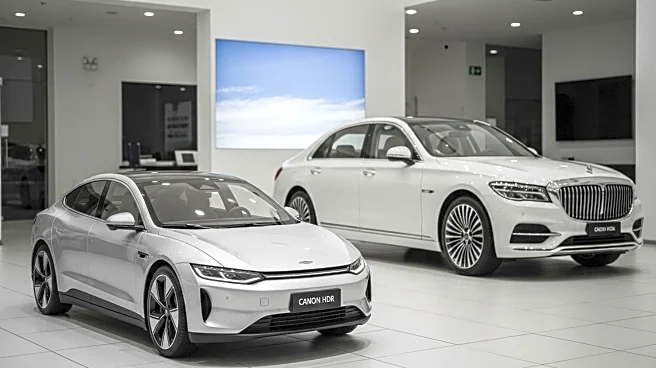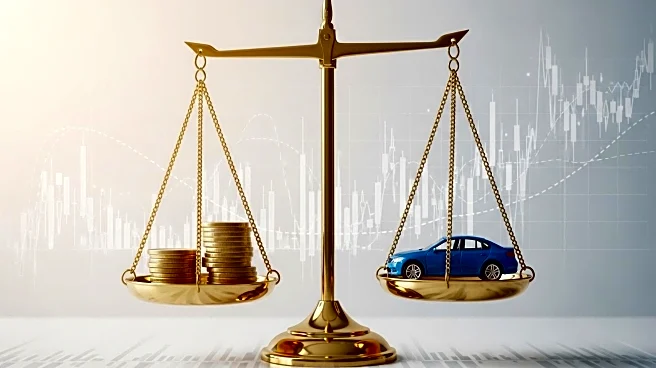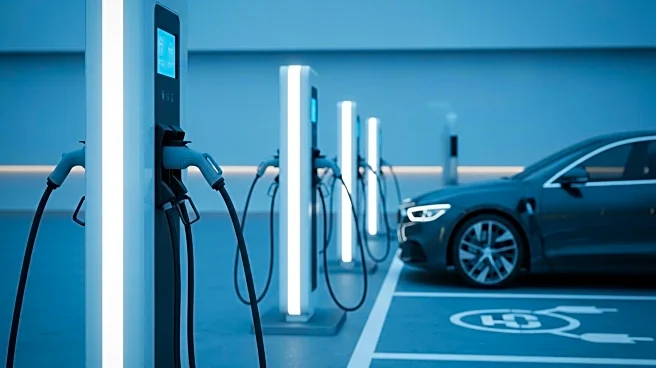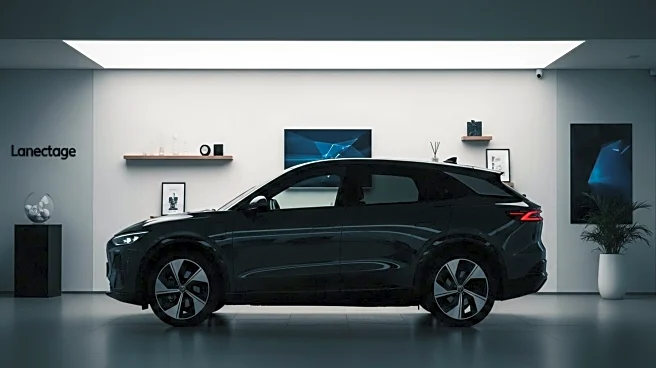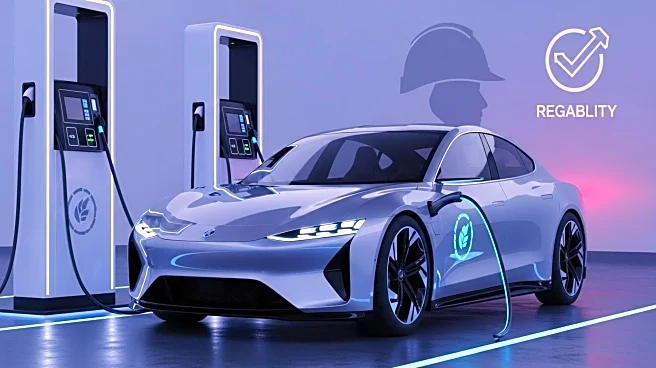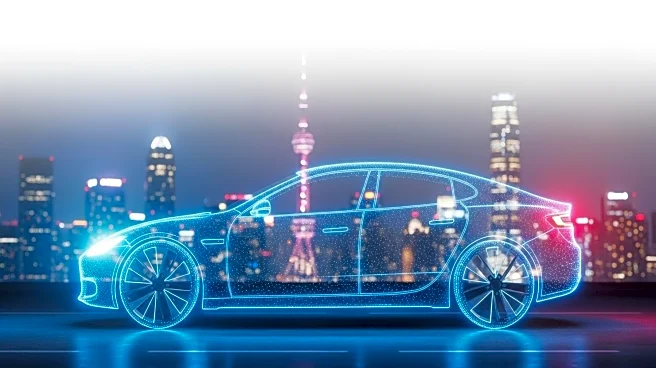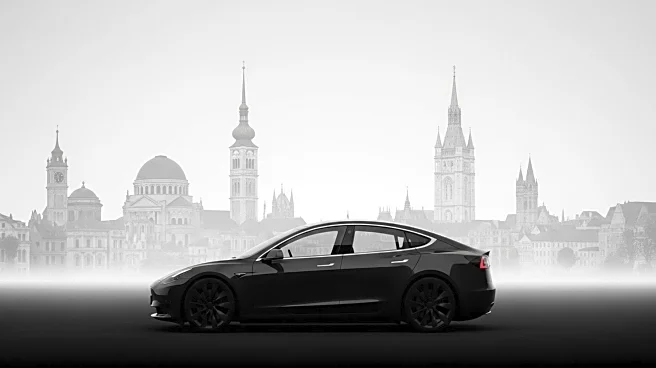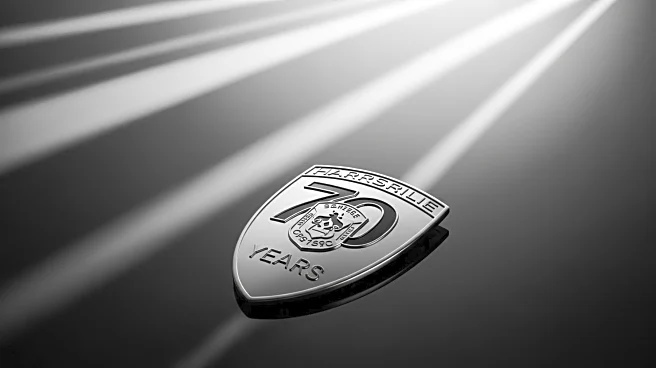What's Happening?
The average price of new cars in the United States has exceeded $50,000 for the first time, according to recent estimates from Kelley Blue Book (KBB). This milestone was reached in September, marking a significant increase in car prices that have been steadily climbing for over a year. The rise in prices is attributed to the growing popularity of luxury models and electric vehicles (EVs), which have pushed the market into record territory. In September, EVs accounted for 11.6% of all new vehicle sales, setting a new record. The average price for an EV was $58,124, reflecting a 3.5% increase from August. Additionally, EV sales in the third quarter reached 437,487 units, capturing a 10.5% market share, which is a nearly 30% increase compared to the same period last year. The expiration of government-backed EV incentives at the end of September prompted many buyers to finalize their purchases.
Why It's Important?
The increase in new car prices has significant implications for the automotive industry and consumers. As prices rise, many price-conscious buyers are turning to the used-vehicle market, as the availability of affordable new vehicles diminishes. The shift towards luxury models and EVs indicates a changing consumer preference, potentially influencing manufacturers to focus more on these segments. The high average transaction price (ATP) reflects inflationary pressures in the new-vehicle market, exacerbated by tariffs and other cost pressures. This trend could lead to further market disruptions, as noted by Erin Keating, executive analyst at Cox Automotive, who suggests the market is 'ripe for disruption.' The ongoing changes in the automotive market could affect industry strategies, consumer choices, and economic dynamics.
What's Next?
With the introduction of new Standard versions of Tesla's Model 3 and Model Y, Kelley Blue Book anticipates a potential decrease in average prices across the EV segment in the coming months. This could make EVs more accessible to a broader range of consumers, potentially increasing their market share further. As government incentives for EVs have expired, manufacturers and consumers may need to adjust to the new pricing landscape. The automotive industry may also see increased competition and innovation as companies strive to meet consumer demands for affordable and sustainable vehicles. The evolving market conditions could lead to strategic shifts among manufacturers and changes in consumer purchasing behavior.
Beyond the Headlines
The rise in new car prices and the growing market share of EVs reflect broader economic and environmental trends. As consumers increasingly opt for EVs, there is a potential for long-term shifts towards sustainable transportation solutions. This transition could have significant environmental benefits, reducing carbon emissions and reliance on fossil fuels. Additionally, the focus on luxury models and EVs may influence cultural perceptions of vehicle ownership, emphasizing technological advancement and environmental responsibility. The automotive industry's response to these trends could shape future policies and innovations, impacting the broader economy and society.
